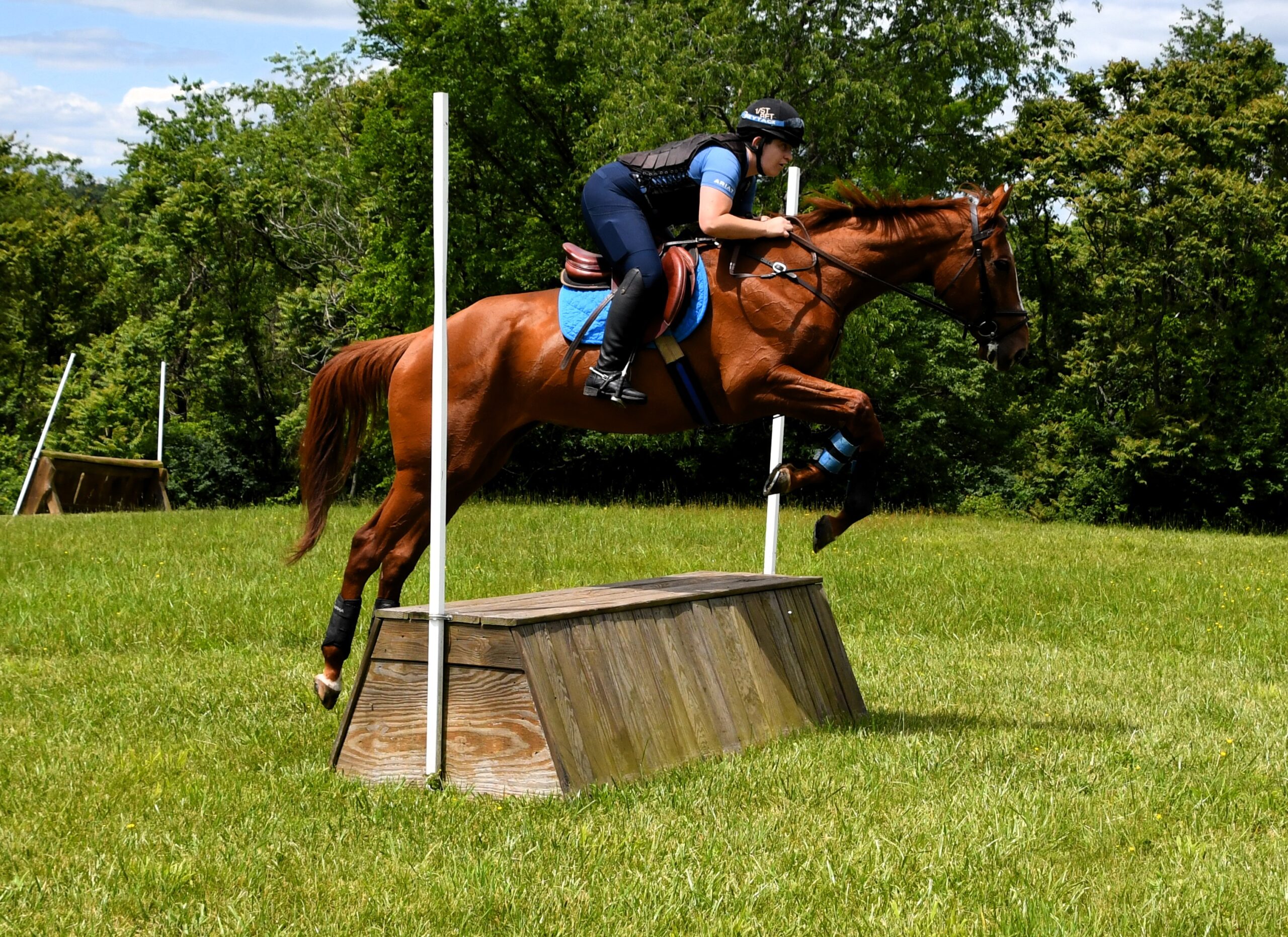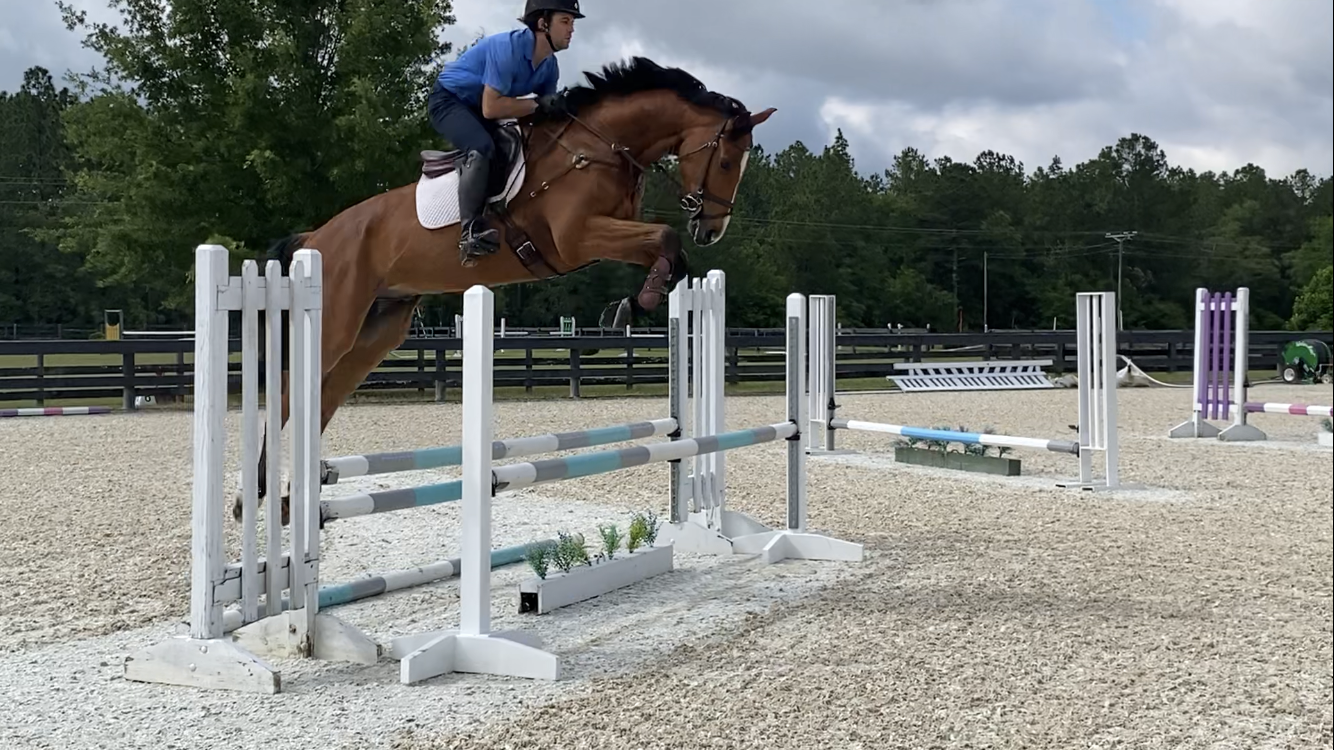It seems lately that I’ve heard a few riders mention shock wave therapy, and being a bit old-fashioned, and somewhat ignorant about it, I decided to find out more. Dr. Duncan Peters is arguably one of the best sport horse vets in the country; Hagyard Equine Medical Institute lured him to Kentucky from Montana a few years ago, but he still spends the winter season working the Thermal circuit, and keeps his eye in by show-jumping to a pretty high standard as time allows. He generously spared me some time to explain shock wave therapy…
Dr. Peters tells me that Shock Wave Therapy has been popular as a treatment for horses for the last seven or eight years or so, and the name “shock wave” is something of a misnomer,
“It is basically sound waves, based on the human medicine product lithotripsy, which is sound waves going in to break up stones, like kidney stones and bladder stones and things like that. So it’s a sound wave that causes vibrational damage to solid objects, but what happens in soft tissues, and in bone (bone is truly a soft tissue, we don’t think of it as soft tissue, but it is a dynamic tissue), is that sound waves go into those tissues, and as they go through those tissues, or into them, there’s a vibrational release of energy, and that energy then stimulates a bunch of metabolic processes within those tissues, depending on whether it’s a tendon, ligament, muscle or bone.”
Shock Wave Therapy will not yield instant results; just the opposite in fact,
“In a lot of cases it isn’t the direct treatment at that time, it’s actually what happens down the road, within the next five days, ten days, fifteen days, even thirty days. What they’ve actually shown in the research is that shock wave can have an effect for generally thirty or thirty-five days, it’s shown that nerve impulse can be delayed by up to thirty-five days before they come back before they come back to their normal activity, so it does have an effect that’s a little bit longer term. In many tissues, or many entries, that’s very effective because it makes the body continue to try to heal something or, build a response to an insult. “
Let’s have a look at the machine…
You can use Shock Wave Therapy for almost anything,
“You can use it for soft tissue, you can use it for tendons, you can use it for ligaments, muscle soreness, fractures in bones, all of these because a general premise of using it is that it stimulates the body’s own mechanisms to get fired up and supercharged to help the area where there’s already an insult. Everyone that uses it probably has something that they feel it works best for. Some people use it for a wide variety of things, I tend not to; I like it for ligament/bone interfaces where ligaments attach to bones, we tend to get a weakness there, or we get tearing there, and I think it works very well on those types of things. I think it works very well in structures that don’t have a good blood supply like ligaments or tendons, that take a fairly long time to heal, but say you get to 60 or 90 days out, and a lot of times the lesions that are there just tend to sit there because the body doesn’t really recognise them as being that much of a problem anymore, because there isn’t a heavy blood supply and there isn’t a lot of inflammation associated with that, and so I use it in a lot of cases on those sorts of injuries to keep the body alerted and to keep working on it. “
“A lot of people are using it on sore muscles to try and increase circulation. Again, it’s a low-grade stimulus of the area so that you get a better blood flow into the area, and you clean up the by-products of muscle soreness, like lactic acid.”
“I’ll also use it on some direct bony-type problems, it seems to work very well on things like splints, kissing spine lesions in the back, a lot of those that are more acute – it will help in terms of stimulating a response, but it will also help in terms of deadening the nerve impulses in those areas and take away pain that way. That’s why in FEI competitions you’re not allowed to use it five days before because it has enough numbing ability that if you put it over nerves, it will tend to deaden the nerves to some degree, and take away pain. “
There is no test for shock wave therapy.
“We’re just going on good faith that people wouldn’t use it, with the idea that it might mask something enough that it could potentially cause a devastating type injury. For example if you had a stress fracture, it’s possible to deaden the nerves in that area and then go ahead and compete and all of a sudden you could have a catastrophic fracture. It can be that effective.”
Treatments can run about $300 to $500 depending on the area and the level of “pulse”. It can be very effective and isn’t as expensive as some other treatments like stem cell, but over a series you could invest a fair expense into it. Show horses and race horses are using it. Dr. Peters demonstrated to me what it feels like; I thought I was pretty brave, until he put the gel on….!
%%
The levels run from 1 to 6. Last year Dr. Peters hurt his Achilles tendon while training for a triathlon (classic Mark Todd injury), and administered himself with a treatment of shock wave therapy, level 3. He told me he cried from the pain, while his intern watched and laughed! For the record, his leg is completely healed now. Shock wave therapy is commonly used in humans for plantar fasciitis, back pain and other complaints, but usually people tend to go to a doctor! Of course, I’ve only given you the Dummy’s version (that would be me!) of Shock Wave Therapy here, but I hope it’s maybe helped a little bit, and if nothing else, entertained! Many thanks to Dr. Peters for his time and expertise, and to Hagyard Equine Medical Institute for letting us use their fabulous facility, and to Dr. Peters’ new assistant Brie who helped us too. Thanks for reading and for your patience, and by all means please stop now and go eventing!






















